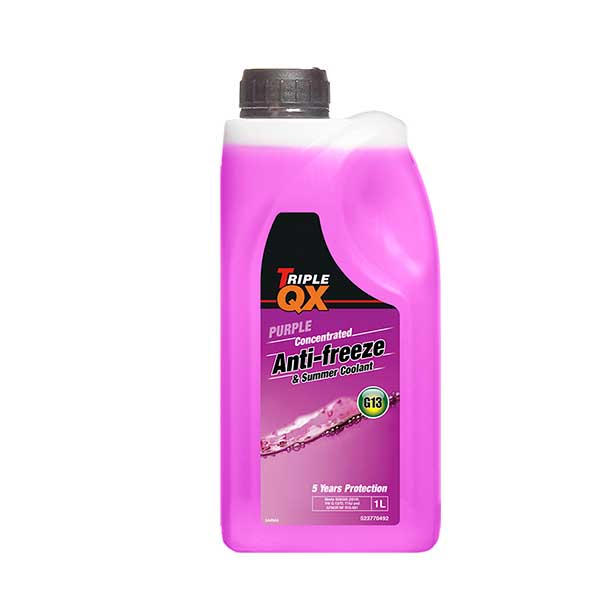Cars work hard to get you from point A to B, and along the way, this can cause the engine to become extremely hot. This is where engine coolant comes in. A vital part of any engine, understanding the role coolant serves is important for any driver to know, in order to keep your car well maintained.
Ensure you are ready to keep your car engine cool, with our range of coolants and anti-freezes. Always check your vehicle’s manual to make sure you are purchasing the correct coolant for your car.
What Does Coolant Do?
Engine coolant, commonly known as antifreeze, is a liquid which passes through the engine of your car and absorbs heat produced by the vehicle as it runs. Coolant is not designed to remove all heat from an engine, as some will be expelled from the exhaust, but it plays an essential role in your car’s cooling system.
As coolant takes the heat from within the engine, it makes its way to the car radiator, at which point it is cooled via air flow. This process continually repeats as you drive, helping to prevent your car from overheating.
Is Coolant The Same As Antifreeze?
Coolant and antifreeze are often used interchangeably to refer to one another. Many coolants will be mixed with antifreeze chemicals so they can be used during hot and cold weather.
Whilst many coolants can be used in all weather conditions, always make sure to check the label of your coolant, to see if is usable in sub-zero temperatures.
How Do You Recognise A Problem With Engine Coolant?
Knowing the tell-tale signs of an engine coolant problem can help you tackle any potential overheating your car could experience.
The first indicator will be on the dashboard thermometer. If it is displaying a higher temperature than normal, this could mean the engine is overheating and there could be an issue with the cooling system. The thermometer light will also switch on to indicate a problem.

A common cause of increased engine temperatures is a coolant leak. This can occur if the car radiator is blocked or the radiator cap is loose, allowing coolant fluid to escape. Older vehicles can also be more vulnerable to leaks as their parts gradually wear down.
A cooling problem is not always guaranteed to be caused by a leak, but it is important to spot when this may be happening.
How Do You Top-Up Engine Coolant?
The engine coolant level should be checked at least twice a year to isolate any potential issues. Checking as the seasons change, i.e. moving from Summer into Autumn, will give you the opportunity to check your engine coolant before temperatures become much colder or warmer.
To check your coolant levels and top it up if needed, you need to:
- Leave your car to cool down for a few hours or overnight if recently driven. The engine could still be hot, so this gives the engine enough time to cool before checking the coolant levels
- Once the engine is cold, locate the expansion tank; this is usually a white plastic container. If you are unsure where your coolant tank is, check your vehicle manual to help you identify the correct tank
- Check the level of fluid against the minimum and maximum markers. Coolant should always be filled between these two points. If the level is below the minimum mark, remove the filler cap and top it up with additional coolant. Avoid mixing with a different coolant to what is already in the tank
- Search around the expansion tank for any leaks
If you find that the coolant levels are regularly dropping below the minimum mark, take your car to a local garage, as there may be a deeper problem that needs addressing.
Checking on your car’s engine coolant is important in all seasons, but as the days turn colder, your driving habits may also change. For some helpful advice, check out our guide on the best winter driving tips.




